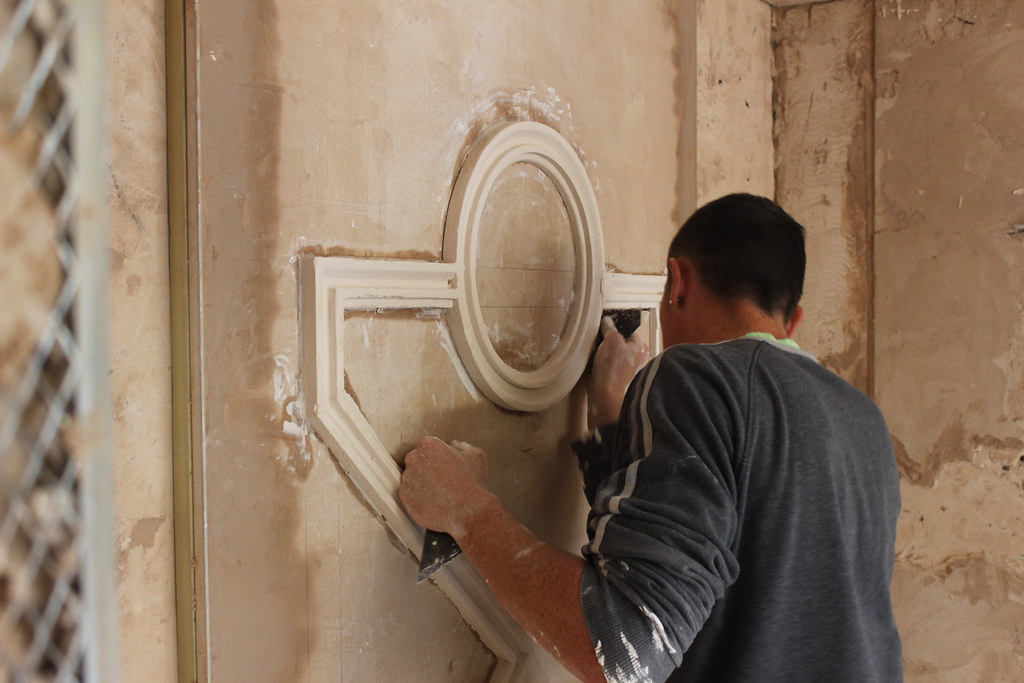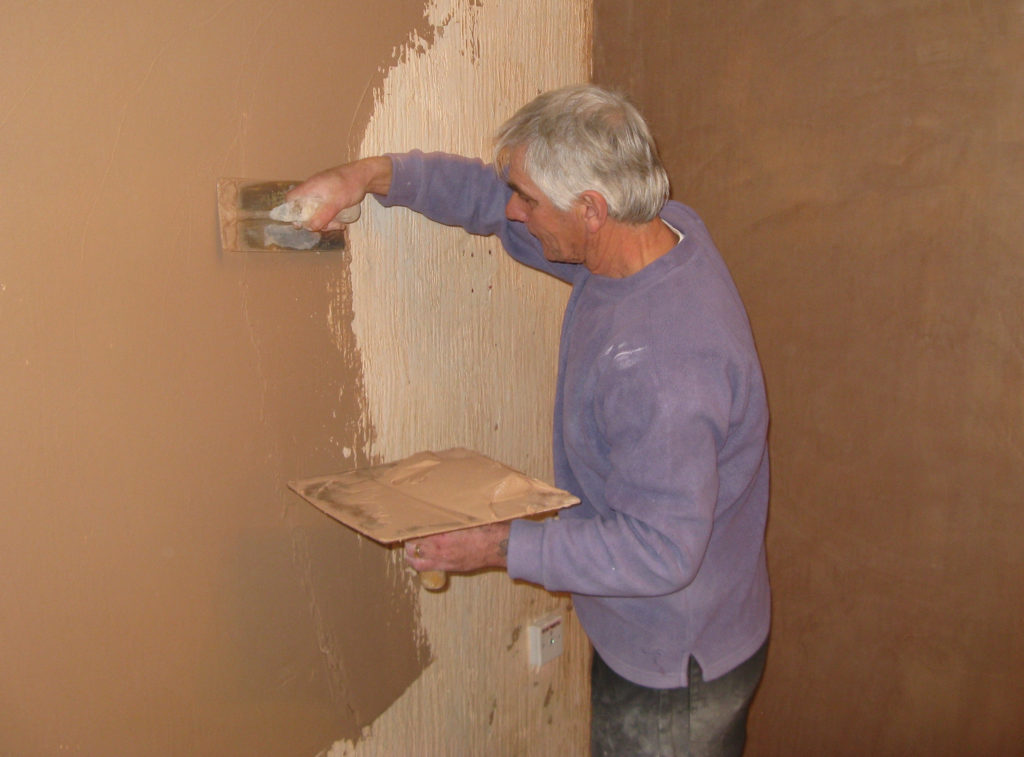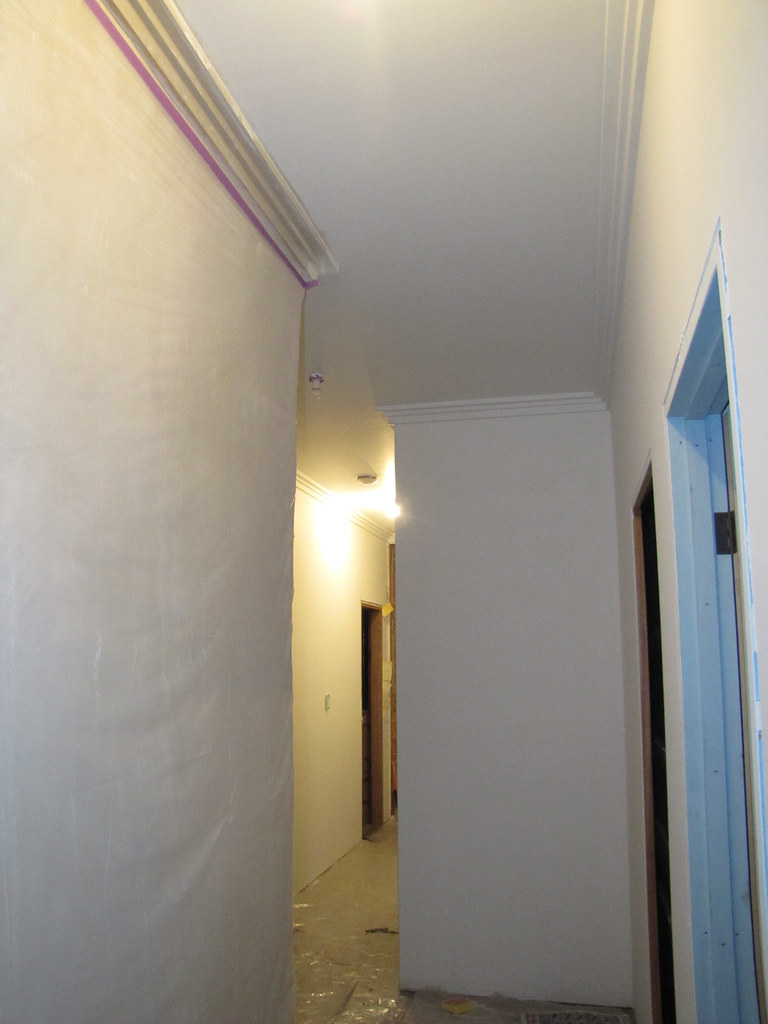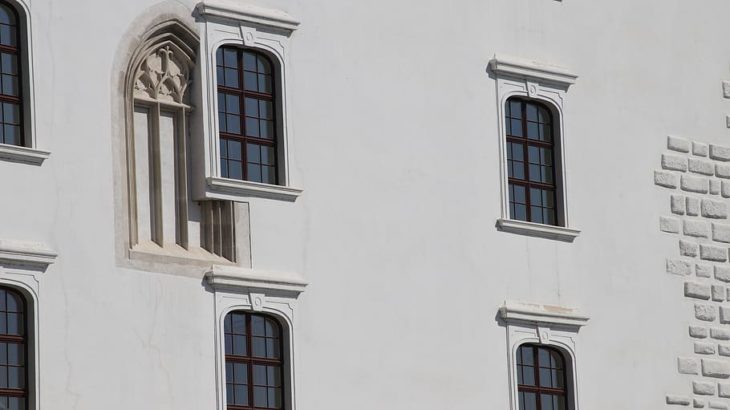Summary
– Step 1: Make a diagnosis to prepare the plaster wall
– Step 2: Fill in important holes on the plaster wall
– Step 3: Fill cracks and minor holes
– Step 4: Sand and clean the plaster wall
– Step 5: Paint the plaster wall
The installation of a wall covering, especially painting, requires preparing the plaster wall so that it is solid and smooth.
Gypsum walls can be brittle or damp and may have cracks and holes of varying sizes that need to be cleaned and filled.
To prepare a plaster wall, make a diagnosis of the wall to identify the defects and correct them. Finally, sand and wash the wall.
1. Make a diagnosis to prepare the plaster wall

The first thing to prepare a plaster wall before painting it is to make a diagnosis to check its solidity.
Look for holes and cracks in the wall, as well as traces of moisture.
How do you know if a plaster wall is damp? Traces of moisture are visible on the wall: moisture leaves stains. You can also check with your bare hands: you can feel the moisture. There are also devices for measuring the moisture content of walls.
To prepare a plaster wall with traces of moisture, it is best to call in a professional who will determine the cause of the moisture in the walls. He will advise you on how to treat the moisture effectively.
If the plaster wall is brittle
If the plaster is floury or friable, you need to apply a primer for friable substrates. This is a product that is applied to the walls with a roller and which hardens powdery, floury or friable plaster supports.
To apply the primer to plaster walls:
– Ventilate the room and protect the floor with plastic sheeting or newspaper.
– Wear protective gloves and goggles.
– Apply the product with a roller and allow it to dry for the time indicated on the packaging.
2. Fill large holes in the plaster wall

If there is a large hole in the wall, fill it with gypsum plaster for internal walls and ceilings and use cement plaster for the exteriors.
– Remove the debris and then scrape the edges of the hole with a triangular scraper to remove all brittle parts. This will ensure a better grip of the plaster or patch.
– Dust the hole with a quack grass brush.
– Prepare a plaster in a basin or plaster trough according to the manufacturer’s instructions.
– Protect the flooring with a tarpaulin or used sheets.
– Moisten the inside of the hole with a damp sponge to ensure good adhesion of the plaster.
– Remove a small amount of sealer with a painting knife and place it in the hole.
– Press the blade of the knife down hard to get the filler inside the hole.
– Smooth over the blade of the knife several times and remove the excess plaster.
– Allow to dry before sanding lightly if necessary.
If there are cracks in the plaster wall
To prepare a plaster wall with many or large cracks, it will have to be covered.
Interlining a wall consists of covering it with glass fibre cloth. This is a resistant wall covering that consolidates the wall and masks any defects; you can then paint the glass fabric. There are glass cloths with different patterns.
In case of important defects in the flatness of the wall
To prepare a plaster wall with many irregularities or unevenness, apply a smoothing plaster.
The smoothing plaster is applied over the entire surface of the wall.
– Divide the wall into squares of about 50 cm on each side; you will gradually cover these squares with plaster.
– Apply the plaster from the bottom of the wall.
– Smooth with a plastering knife.
– Allow to dry before sanding lightly if necessary.
If your walls have cracks and unevenness, first lay the glass fibre fabric and then apply the smoothing compound.
3. Fill cracks and small holes
Small holes and small cracks can be filled with a filler or ready-to-use adhesive mortar.
– Widen holes and cracks with a spatula.
– Remove dust and plaster debris with a quack grass brush.
– Fill the holes with filling mortar with a spatula.
– Remove excess plaster and smooth with the spatula.
– Allow to dry.
4. Sand and clean the plaster wall
Wear a mask and goggles; ventilate the work piece you are sanding.
It is important to prepare the plaster wall by sanding it, this will remove any roughness and you will obtain a perfectly smooth surface.
Sand the wall with an eccentric sander or a giraffe sander.
– Equip the sander with heavy grit paper and sand the plaster wall once.
– Then sand with fine grit paper to completely smooth the surface.
– Finish by dusting the wall with a brush before washing it with a damp sponge. Rinse the sponge regularly.
Important: Never use detergent to clean a plaster wall. You will have difficulty rinsing it out and the paint you apply afterwards will not hold.
5. Paint the plaster wall

When you have finished preparing the plaster wall, paint it with a roller and a paintbrush.
– Paint the perimeter of the wall with the paint brush.
– Paint the rest of the wall with a roller.
– Paint the baseboards and window openings with a brush.
If you think preparing a plaster wall for painting is a difficult DIY job for you, Crown Solid Plaster can help you out. They will not disappoint you with their 15 years of experience in all types of rendering services. Remember to leave your comments below!




















2 thoughts on “Preparing a Plaster Wall for Painting It”